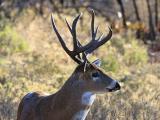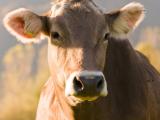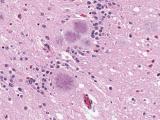Oct 11, 2006 (CIDRAP News) – Deer may spread chronic wasting disease (CWD) through their saliva, according to the results of a study published in the Oct. 6 issue of Science.
CWD is a prion disease that affects deer, elk, and moose and is similar to bovine spongiform encephalopathy (mad cow disease) and its human equivalent, Creutzfeldt-Jakob disease. The brain-destroying disease has been identified in 14 US states and two Canadian provinces and is known to spread easily from animal to animal, but how it spreads has been a mystery.
Researchers in Colorado tested four sets of 6-month-old hand-raised deer, exposing them to saliva, feces and urine, blood, or brain from wild or captive deer with CWD. A fifth set were inoculated with each of those materials from wild deer without CWD. Tame deer were used as test animals because of the logistical difficulties of working with wild animals, according to the report.
The deer were observed for 18 months and their tonsil tissue was regularly tested for signs of infection. After 18 months the deer were euthanized, and their brains were autopsied, according to the Science report.
All the deer exposed to saliva and to blood from CWD-infected deer were infected, while those exposed to urine and feces remained healthy.
The researchers state that infectious CWD in saliva may explain why the disease spreads so easily. Interactions between different animals, "especially in high density and captive situations, would be expected to facilitate salivary cross-contact," the report says.
There is some previous evidence of bloodborne transmission of prion diseases, including in variant Creutzfeldt-Jakob disease. But the finding of bloodborne transmission in this study shows "that no tissue from CWD-infected cervids can be considered free of prion infectivity," and it also suggests that the disease could be spread by insects, the authors write.
While the urine- and feces-exposed deer did not get sick, that exposure route should not be ruled out entirely, because the sample was small and the study might have been too short for the disease to emerge, the article states.
Richard Race, a veterinarian who studies the disease at the National Institutes of Health's Rocky Mountain Laboratories, suggested that the sick animals could be shedding a lot of saliva shortly before death, according to an Oct 5 Associated Press report. "Saliva's a good bet," he said.
While people have not been known to contract CWD, the study's results highlight the importance of using gloves when in contact with the blood or saliva of cervids in areas where CWD has been identified, the report says.
Mathiason CK, Powers JG, Dahmes SJ, et al. Infectious prions in the saliva and blood of deer with chronic wasting disease. Science 2006 Oct 6;314(6):133-6 [Abstract]


















